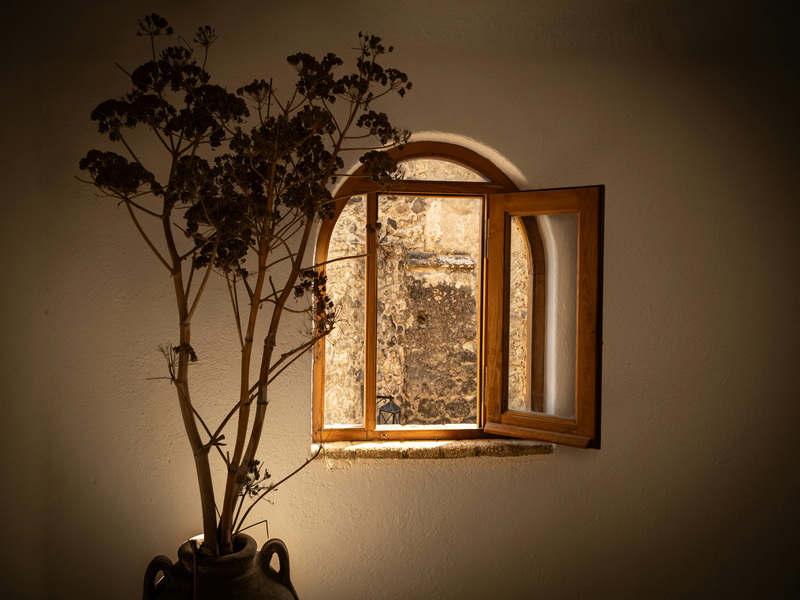English 




Views: 222 Author: Astin Publish Time: 2025-04-08 Origin: Site



Content Menu
● Introduction to Aluminum Window Profiles
● Anatomy of an Aluminum Window Profile
● Types of Aluminum Window Profiles
● Performance Metrics for Aluminum Window Profiles
● Customization and Aesthetics
● Tips for Choosing the Right Aluminum Window Profile
● Key Considerations for Aluminum Window Profiles
● Latest Trends in Aluminum Window Profile Design
● Environmental Impact and Sustainability of Aluminum Window Profiles
● Comparative Analysis of Aluminum vs. Other Window Materials
● Installation and Maintenance Tips for Aluminum Window Profiles
● Case Studies of Successful Aluminum Window Profile Projects
>> 1. What are the benefits of using aluminum window profiles?
>> 2. How do I choose the right aluminum window profile for my project?
>> 3. What types of finishes are available for aluminum window profiles?
>> 4. Can aluminum window profiles corrode?
>> 5. How long does it take to produce aluminum windows?
Choosing the right aluminum window profile is a crucial decision in both residential and commercial construction projects. Aluminum window profiles are renowned for their strength, durability, and versatility, making them a popular choice for architects and homeowners alike. This article will guide you through the process of selecting the perfect aluminum window profile for your project, covering key considerations such as design, functionality, and performance metrics.

Aluminum window profiles are extruded from aluminum alloys, offering a wide range of options in terms of shape, size, and functionality. These profiles form the frame that surrounds the window pane, determining the overall look and structural integrity of the window. Aluminum is a lightweight yet robust metal with excellent durability, resistance to corrosion, and environmental sustainability due to its recyclability.
Understanding the anatomy of an aluminum window profile is essential for making informed decisions. The profile typically consists of three main components:
1. Frame: The rigid framework that houses the glass and encompasses the perimeter of the window.
2. Sash: The operable component that slides or swings open to control airflow and ventilation.
3. Glazing: The glass or other transparent material that fills the space between the frame and sash.
Aluminum window profiles can be used to create a variety of window types, each with unique advantages:
- Single Hung: A classic choice featuring a vertically sliding sash for natural ventilation.
- Double Hung: Similar to the single hung, but with both the upper and lower sashes operable, offering superior airflow and flexibility.
- Casement: Hinged at one side, casement windows swing outward, providing unobstructed views and enhanced ventilation.
- Awning: Hinged at the top, awning windows open outward from the bottom, safeguarding interiors from rain and wind.
- Sliding: Operating horizontally, sliding windows glide effortlessly, creating seamless transitions between indoor and outdoor spaces.
Beyond aesthetic considerations, assessing the performance characteristics of aluminum window profiles is paramount:
- Durability and Strength: Aluminum windows are known for their exceptional durability, with a lifespan of 25 to 50 years or more, depending on the local climate and care.
- Thermal Performance: Aluminum window profiles can be designed with thermal breaks to improve insulation capabilities, reducing heat transfer and energy consumption.
- Maintenance: Aluminum windows are low maintenance due to their resistance to corrosion and weathering.
Aluminum window profiles offer a high degree of customization, allowing architects and homeowners to create windows that complement the architectural style of a property. Profiles can be finished in a wide range of colors and textures, including anodizing, powder coating, and wood grain finishes.

1. Understand the Purpose: Determine the role the aluminum window profile will play in your project, whether it's for structural support or aesthetic appeal.
2. Assess Thermal Needs: Consider if your project requires thermal insulation or conductivity.
3. Evaluate Weight and Load-Bearing Requirements: Choose profiles that can handle the required weight without bending or warping.
4. Consider Finish and Aesthetics: Select profiles with finishes that enhance appearance and durability, such as anodizing or powder coating.
5. Consult Professionals: Seek advice from industry experts to ensure the chosen profile meets local building standards and performance expectations.
When selecting aluminum window profiles, several key factors must be considered:
- Strength and Durability: Ensure the profile offers the necessary strength and durability for the specific window design.
- Corrosion Resistance: Opt for profiles with protective coatings like anodizing or powder coating to enhance longevity.
- Thermal Performance: Choose profiles that provide the desired level of insulation to optimize energy efficiency.
- Colour and Finish Options: Select profiles that match the architectural style and aesthetic requirements of the project.
The design of aluminum window profiles is evolving rapidly, driven by technological advancements and changing consumer preferences. Some of the latest trends include:
- Slim Profiles: Thinner frames that maximize glass area, offering unobstructed views and a more minimalist aesthetic.
- Smart Windows: Integration of smart technologies, such as electrochromic glass and automated window controls, enhancing energy efficiency and user experience.
- Sustainable Materials: Increased focus on using recycled aluminum and designing profiles with recyclability in mind.
Aluminum window profiles are considered environmentally friendly due to their recyclability and energy efficiency. Aluminum is one of the most recycled metals globally, with a high recycling rate that reduces waste and conserves natural resources. Additionally, aluminum windows can be designed with thermal breaks to minimize heat transfer, reducing the need for heating and cooling systems.
Aluminum window profiles are often compared to other materials like wood, vinyl, and fiberglass. Here's a brief comparison:
- Aluminum vs. Wood: Aluminum offers better durability and resistance to weathering compared to wood, which requires more maintenance.
- Aluminum vs. Vinyl: Vinyl windows are less expensive but may lack the strength and customization options of aluminum.
- Aluminum vs. Fiberglass: Fiberglass windows provide excellent insulation but can be more expensive than aluminum.
Proper installation and maintenance are crucial for ensuring the longevity and performance of aluminum windows:
- Installation: Ensure accurate measurements and secure fastening to prevent leaks and structural issues.
- Maintenance: Regularly clean the profiles to prevent dirt buildup and inspect for any signs of wear or damage.
Several notable projects have showcased the versatility and effectiveness of aluminum window profiles:
- High-Rise Buildings: Aluminum windows are commonly used in skyscrapers due to their strength, durability, and ability to withstand high winds.
- Residential Homes: Aluminum windows are popular in modern homes for their sleek appearance and energy efficiency.
- Historical Renovations: Aluminum profiles can be customized to match traditional designs while offering modern performance benefits.
Choosing the right aluminum window profile is a critical decision that impacts the aesthetic appeal, energy efficiency, and structural integrity of a building. By understanding the anatomy, types, and performance metrics of aluminum window profiles, and considering factors such as durability, thermal performance, and aesthetics, you can make an informed decision that elevates your project to new heights.

Aluminum window profiles offer several benefits, including strength, durability, corrosion resistance, and environmental sustainability. They are lightweight, easy to work with, and provide excellent energy efficiency when designed with thermal breaks.
To choose the right aluminum window profile, consider the purpose of the profile, assess thermal needs, evaluate weight and load-bearing requirements, think about the finish and aesthetics, and consult with professionals in the industry.
Aluminum window profiles are available with various surface treatments, including anodizing, powder coating, electrophoretic coating, and wood-grain finishes. These finishes enhance both appearance and durability.
Aluminum itself does not rust like iron-based materials, but it can corrode under certain conditions. Protective coatings such as anodizing or powder coating prevent corrosion and ensure longevity.
The production time for aluminum windows can be as low as four weeks, depending on the complexity of the design and the manufacturer's capacity.
[1] https://www.krcaluprofiles.com/blog/how-to-choose-the-right-aluminum-window-profile-for-your-project/
[2] https://jmaluminium.com/selecting-right-aluminium-profiles/
[3] https://www.retop-industry.com/news/aluminium-alloy-profiles.html
[4] https://www.krcaluprofiles.com/blog/understanding-aluminum-window-profiles-a-comprehensive-guide/
[5] https://www.glasxperts.com/blog/the-most-commonly-asked-questions-about-aluminium-sliding-windows/
[6] https://www.gj-alu.com/news/everything-about-aluminum-window-profiles.html
[7] https://expresswindowsgroup.co.uk/finding-the-right-aluminum-for-your-windows/
[8] https://www.onealu.com/news/a-practical-guide-to-aluminum-profiles-for-doors-and-windows/
[9] https://amcaluminum.ph/tips-choosing-aluminum-windows/
[10] https://debesto.com/en/blog/faq-aluminium/
[11] https://www.prancebuilding.com/blog/2017/08/18/nine-questions-that-are-often-asked-on-aluminum-doors-and-windows/
[12] https://www.alimax.ltd/aluminium-windows-faqs
[13] https://grupokefren.com/en/design/how-to-choose-an-aluminum-window/
[14] https://debesto.com/en/blog/how-to-choose-the-right-aluminum-windows-a-guide/
[15] https://www.weiye-aluminium.com/how-to-choose-the-right-aluminum-window-profile-for-your-house.html
[16] https://aluprof.com/en/blog/which-aluminium-window-should-i-choose
[17] https://www.aluminumland.com/aluminum-window-profile-and-door-profile-how-to-choose/
[18] https://cmech.com/post/6-tips-for-choosing-the-best-aluminum-alloy-windows-for-your-home-cmech
[19] https://www.technal.com/en/tme/informations/blogs/a-comprehensive-guide-to-choosing-the-right-aluminum-windows-for-your-project/
[20] https://www.linkedin.com/pulse/how-choose-aluminium-window-door-aluminium-profile
[21] https://amcaluminum.ph/how-to-choose-the-right-aluminum-windows-for-your-project/
[22] https://www.unowindows.co.nz/blog/6-aluminium-window-considerations
[23] https://maxwindows.com.au/choosing-right-aluminium-profiles-for-windows-and-doors/
[24] https://www.woodminium.com/faq-while-buying-aluminium-windows/
[25] https://capitalwindows.co.uk/what-questions-should-you-ask-your-aluminium-window-company/
[26] https://www.eterniawindows.com/articles/window-frame-and-aluminium-faq/
[27] https://alteza.in/here-is-what-you-should-ask-your-aluminium-windows-supplier/
[28] https://aluprof.com/en/blog/facts-and-myths-about-aluminium-windows
[29] https://www.windowwise.co.uk/aluminium-windows-faq/
[30] https://www.aspect-windows.com/frequently-asked-questions/window-faqs/faq-what-are-the-advantages-of-aluminium-windows/
[31] https://www.techniglaze.co.uk/aluminium-windows-and-doors-faqs
[32] https://www.reaying-alu.pcd-insert.com/FAQ/FAQ-1.html
[33] https://www.shenghai-alu.com/article/tips-for-buying-aluminum-profiles-for-door-and-window.114
[34] https://fintecnic.pl/en/blog/aluminium-windows-advantages-and-disadvantages/
[35] https://amcaluminum.ph/everything-about-aluminum-profiles/
Top Aluminum Furnitures Manufacturers and Suppliers in Czech Republic
Top Aluminum Furnitures Manufacturers and Suppliers in Poland
Top Aluminum Furnitures Manufacturers and Suppliers in Belgium
Top Aluminum Furnitures Manufacturers and Suppliers in Finland
Top Aluminum Furnitures Manufacturers and Suppliers in Denmark
Top Aluminum Furnitures Manufacturers and Suppliers in Greece
Top Aluminum Furnitures Manufacturers and Suppliers in Portugal
Top Aluminum Furnitures Manufacturers and Suppliers in Austria
Top Aluminum Furnitures Manufacturers and Suppliers in Norway
Top Aluminum Furnitures Manufacturers and Suppliers in Sweden
